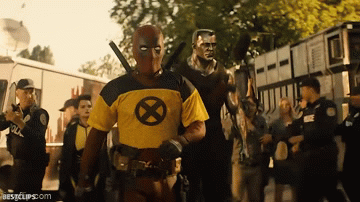Despite what the creators of Game of Thrones would have you believe, every story has a theme.
A theme is an argument, as Craig Mazin says. The story’s theme may or may not be correct, but it exists nonetheless. You can often see a creator develop a theme over the course of their career—
Sometimes, however, the storyteller may be confused about how they're conveying their theme,1 and the audience gets a muddled view as a result.
Elements of Style
That’s what I was thinking about as I watched Pixar’s Elemental with my daughter on Father’s Day.
Yes, everything you’ve heard about the movie is true. It’s basically the “What if ________ had feelings?” meme written by a committee of AI.
It’s the story of an immigrant family who, after a natural disaster destroys their home, left behind their country, family, and everything they’ve ever known for more opportunity in a foreign land. Now their second-generation immigrant daughter feels immense pressure to take over the family business, despite really wanting to become an artist. Should a daughter have to give up her dreams because her parents sacrificed so much for her?
Answering that question is the theme of Elemental, and it’s fine, as far as it goes.
The problem is, this story is told allegorically through the four classical elements. The immigrants are made of fire, move to a city built by earth, water, and air people, and it makes no sense at all.
Allegorical Failure
One could quibble with the world building in the film. For example, why is it considered death for a Water character to evaporate, when the Air characters are represented as clouds—you know, water vapor? But that sort of nitpicking isn’t what I’m talking about here.
The native citizens of Element City2 distrust the immigrants, because they’re dangerous. Likewise, the immigrant family distrusts the natives, due to systemic abuses. At multiple points, various characters say, “Elements don’t mix!” Over the course of the movie, the characters learn to overcome their prejudices, just as we’d hope they would in the real world.
This isn’t just a possible reading of the story; it’s the stated intent of the director. Obviously, no allegory maps onto the real world in a 1:1 manner, but if the allegory breaks down exactly at the point where its meant to intersect with the real world, that’s an issue.
The thing is, in the world of Elemental, the prejudices right! Fire people can boil Water people to death; Water people can inadvertently douse Fire people.3 Their fears and prejudices are entirely justified, and aren’t resolved simply by getting to know people who are different, as would be the case in the real world.4
Fantastic Racism
It’s a similar situation to Zooptopia. While it’s a better movie than Elemental, as an allegory, it’s just as muddled. In this world of sentient animals, the predators are (often) coded as minorities, specifically black people. But in the world of Zootopia, unlike the real world, predators are inherently dangerous. It’s perfectly reasonable for prey to be afraid of what are essentially cannibals who are constantly armed.
Wisecrack did a great video about the confused themes of Zootopia while back—
The same issue occurs in superhero movies, like X-Men.
The metaphor breaks down even further when filmmakers try to apply real-world legal principles, as with the Superhero Registration Act in the MCU—
We can all agree that prejudice is bad, but applying it to fantastical situations doesn’t always, or even often, work. It’s what TV Tropes calls “Fantastic Racism.” Whatever you think about the individual right to bear arms, it is fundamentally different than someone who has bears for arms.
Am I overthinking a kid’s movie? Maybe. Were the filmmakers underthinking it? Yes, definitely.
Children absorb the lessons of the stories they consume on an unconscious level. They don’t think about it at all; they just accept it. So if you’re creating a pro-immigrant, anti-racist movie, you probably shouldn’t inadvertently justify racist and xenophobic fears.
I eventually made a video on the Death of the Author.
OK, one more world-building complaint—have you ever lived in HUMAN CITY? Like, what are the other cities in this world called?
This is likely why Earth and Air people had smaller parts—less dramatic interactions.
We hope.








